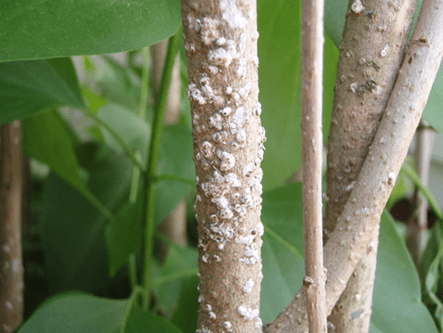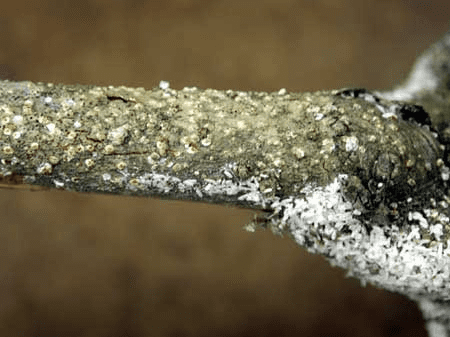Prunicola Scale: What You Need to Know
Biology:
Prunicola scales, like other scales, are tiny insects that feed on the sap of plants. The preferred hosts of prunicola scale are cherry laurels and other Prunus species like flowering cherry, plum, and peach trees. It is also known to infest lilac, butterfly bush, red twig dogwoods, holly, boxwood, and privet. It can be found year-round on trunks and branches, but appearance depends on the lifecycle of the three generations it has annually. It is very difficult to control, and infestations build quickly. Untreated, it will cause branch stunting, yellowing, dieback, and plant decline.
Identification:
Prunicola scale does not produce excessive honeydew and black sooty mold like other sap-sucking insects. Branch discoloration is usually noticed first, months after the initial infestation. In winter, as fertilized females, they appear as small white bumps with a brown center. Eggs hatch into nearly microscopic, orange crawlers, which settle in a new location to feed and create a waxy, felt-like covering. Throughout the growing season, appearance ranges from small white bumps to a patch of white fuzz.
Cultural Control:
First, consider the environmental ramifications. Cherry laurels and ornamental cherries offer relatively little to our local ecology because they are not native to this area. They can tolerate extremely stressful sites, but prunicola scale often indicates a high level of stress in the plant. Improvements to the overall health of infested plants will improve control, but complete eradication is unlikely. A wide variety of native alternatives, like mountain laurel, piedmont rhododendron, drooping leucothoe, mountain pieris, American snowbell, redbud, buckeyes, and fringe trees, will better align with our reforestation efforts. If alternative replacement and chemical treatments are out of the question, prune out infestations and use a powerful stream of water or a soft scrub brush for physical removal.
Chemical Control:
This will require frequent monitoring and multiple pesticide applications. Environmentally friendly treatments with horticultural oils, insecticidal soaps and insect growth regulators will provide some control while preserving beneficial insects. It is best paired with a systemic insecticide root drench to limit exposure to beneficials. Otherwise, many pesticides are labeled for scale.
Images:


